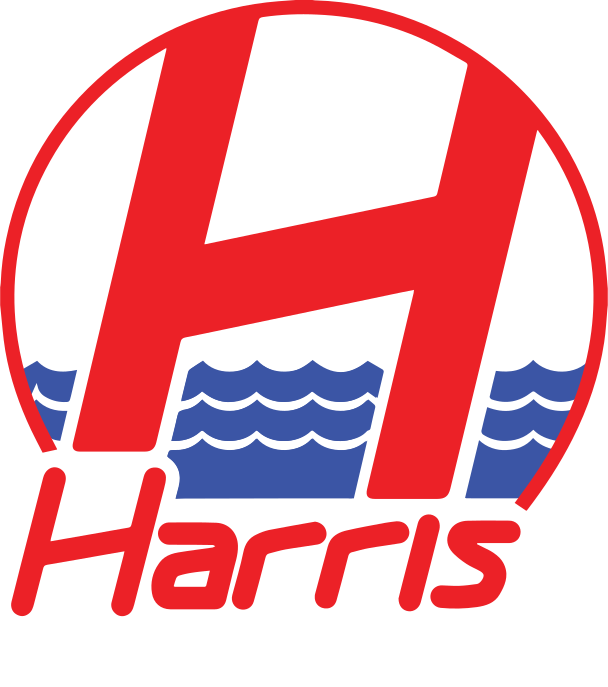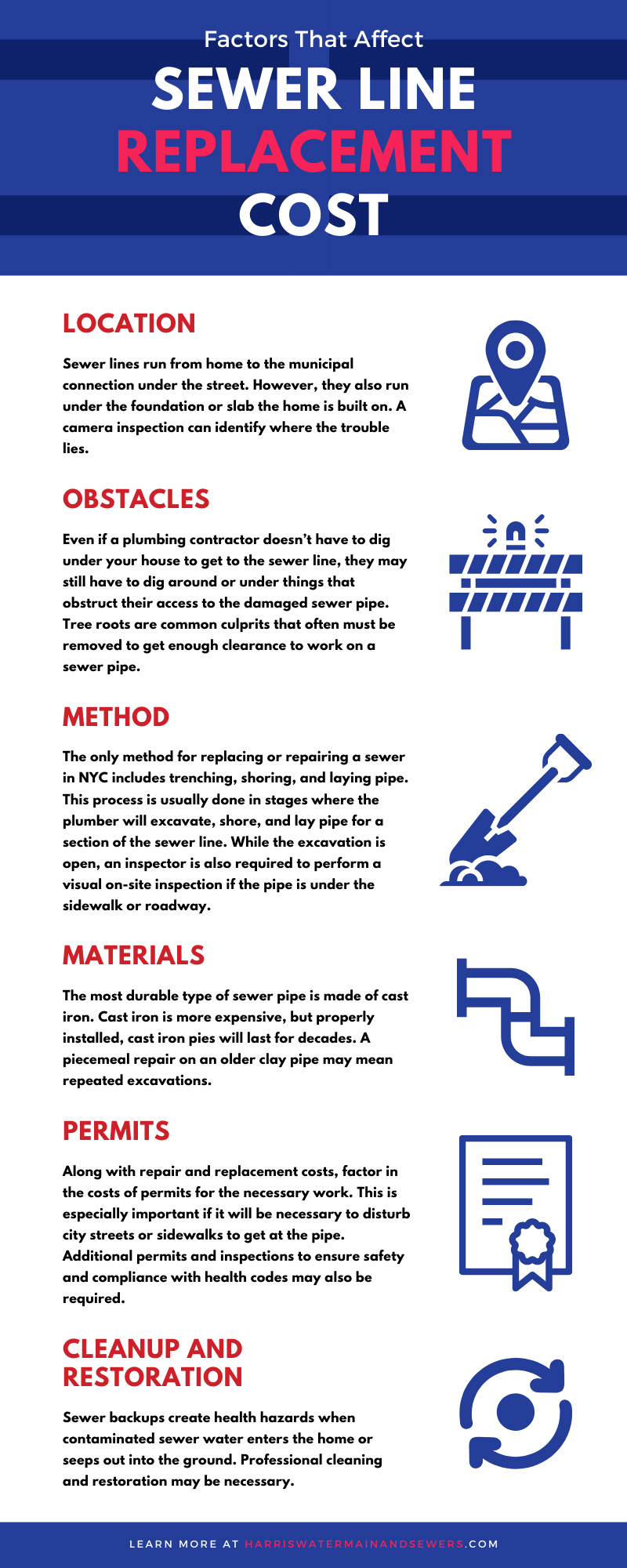Sewer line back-ups are always unpleasant. Repair is essential to avoid further damage to sewer lines and possible contamination in the ground along the buried line. While some types of sewer line issues can be repaired without too much disruption, others require a complete replacement of the sewer line. Know the factors that affect sewer line replacement cost so you can estimate how much to save in an emergency fund for future needs.
Location
Usually, the first sign of a problem with the sewer line is a backup that appears in a sink, tub, or your sewer trap. This can happen when you use household appliances, like dishwashers and washing machines, run sinks, or flush toilets. Another sign of a sewer problem is a foul odor. Even if you haven’t noticed a clog or a backup, bad smells escaping into your house or yard are always a bad sign. Contact a licensed, experienced plumber to conduct a camera inspection of your sewer line to identify what might be causing the problem.
Sewer lines run from home to the municipal connection under the street. However, they also run under the foundation or slab the home is built on. A camera inspection can identify where the trouble lies. A repair or replacement from the house to the city line will be less expensive than a repair that must run all the way under the house. While both types of jobs may require excavation, repairing or replacing a line that runs under the house may require drilling through concrete, adding to the cost.
The length of the line in need of repair is also a factor. Depending on the extent of the damage to the existing pipe and the material of the existing pipe, it may be possible to repair a section of the pipe rather than replace the pipe altogether. However, if inspection reveals that a pipe made of outdated materials is more likely to collapse or succumb to invasion by tree roots, a full replacement is advisable. For example, older homes may have sewer pipes made of clay, or even a material called Orangeburg, made from wood fiber. Although clay is reasonably durable, it is subject to decay, as is the older wood fiber material—also known as orangeburg—which is lighter. Even cast-iron pipes, however, can develop cracks or “bellies,” where the pipe sags due to shifts in the surrounding ground.
Obstacles
Even if a plumbing contractor doesn’t have to dig under your house to get to the sewer line, they may still have to dig around or under things that obstruct their access to the damaged sewer pipe. Tree roots are common culprits that often must be removed to get enough clearance to work on a sewer pipe. Walls, walks, driveways, and fences that were added long after the sewer line was laid down might also have to be dug up or moved to get at the problem.
Newer homes should have a “cleanout” in the front of the house, within two feet of the foundation wall. This is an access point that makes inspecting the pipe and cleaning out obstructions easier
Method
Trenchless technologies known as pipelining are illegal in NYC and are heavily frowned upon by all licensed plumbers. The primary issue with this method is that the liner will serve as a band-aid, resolving the sewer issue for a short period of time, and the sewer line will inevitably have to be replaced in its entirety at a later date. It is always advised to save yourself thousands of dollars and skip the liner process to avoid wasting money, in addition to future issues with your sewer line.
The only method for replacing or repairing a sewer in NYC includes trenching, shoring, and laying pipe. This process is usually done in stages where the plumber will excavate, shore, and lay pipe for a section of the sewer line. While the excavation is open, an inspector is also required to perform a visual on-site inspection if the pipe is under the sidewalk or roadway.
If you are only replacing a section of the pipe, there may only be one excavation to complete, which will still include excavating, shoring, and laying of the pipe in a single section.
The scale of the repair will also dictate the methods the professional plumbing contractor will choose. A broken, decayed, bellied, or collapsed pipe may require complete replacement from the point it exits the house to the municipal sewer line. In these cases, the contractor will excavate down to the sewer pipe, remove it entirely, and replace it.
Materials
The most durable type of sewer pipe is made of cast iron. Cast iron is more expensive, but properly installed, cast iron pies will last for decades. A piecemeal repair on an older clay pipe may mean repeated excavations. Some sewer pipes are made of PVC plastic, which is not compliant under the NYC plumbing code for sub-surface water main and sewer contracts. Some municipal codes will dictate what types of materials are acceptable where you live.
Permits
Along with repair and replacement costs, factor in the costs of permits for the necessary work. This is especially important if it will be necessary to disturb city streets or sidewalks to get at the pipe. Additional permits and inspections to ensure safety and compliance with health codes may also be required.
Cleanup and Restoration
Sewer backups create health hazards when contaminated sewer water enters the home or seeps out into the ground. Professional cleaning and restoration may be necessary. Torn up streets, walks, and yards require repair or restoration after a sewer replacement. Driveways, fences, and garden walls may also have been affected. If tree root removal was necessary, you may even need to hire an arborist to assess the stability and health of the trees impacted.
Licensed, experienced sewer line replacement companies can help you navigate local building codes and environmental department regulations so that whatever repairs or replacements installed can meet code and pass inspections. Experience is critical in older cities with a variety of types of sewer pipes, and a long history of sewer system upgrades, replacements, and expansions. Make sure you speak to plumbing contractors who hold the appropriate licenses, including those necessary for underground work and excavation, and get estimates of the cost of sewer line repair or replacement work before repairs begin.






















